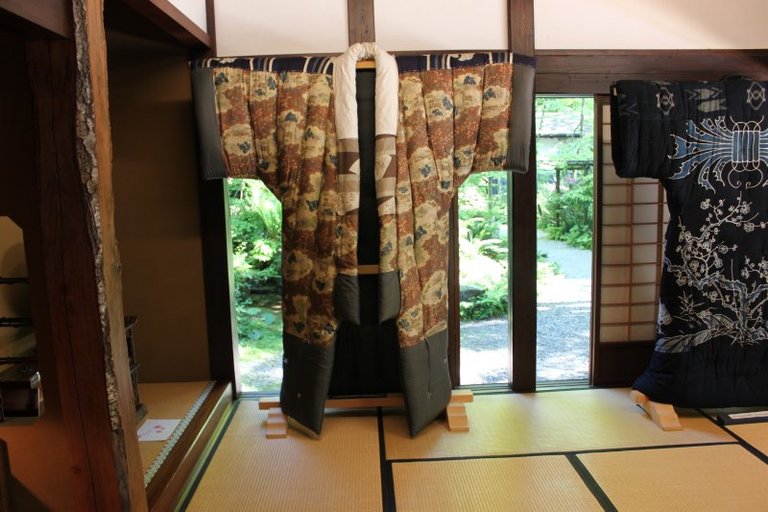Airing out the Quilt ~ Haiku of Japan
We are approaching the dog days of summer. Things are already hot and they may be about to get a lot hotter. These days I think mostly people just run to the AC and escape the heat, but traditionally there was a cleaning activity of sorts associated with this time. Here Kikaku is writing about it.
yogi o kite aruite mitari doyō-boshi
and walking around in it
summer airing
—Kikaku


A lot of things to unpack here. On the surface this is just a nice, pleasant scene, the kind that Kikaku, more than any of Bashō's disciplines, excelled at. He airs out his belongings during the summer; when it comes time to freshen up his winter kimono quilt, he decides to try it on. We don't know why: maybe someone recently gave it to him and he wanted to try it on, or maybe he wanted to see if it was in good enough condition to keep, or maybe he just was in the mood to put it on—who knows. It's a scene we can probably still relate to even today.
If you want to dive in and understand more, there are a few things to look at. First of all, what is this "summer airing"? In this haiku it is literally calling it "Dog Days drying" (土用干, doyō-boshi), but more commonly this is called "drying the bugs" (虫干, mushiboshi).
The Dog Days are of course the hottest part of summer. Historically in Japan it was also drier than the rest of summer, which is incredibly humid. Well, at least compared to the rainy season which would have just ended, it was dryer. So back in the day, this time period was used to air out anything in the house that may have absorbed water during the rainy season and beginning of summer, to prevent mildew and kill any unwanted bugs. This airing out would have mainly included clothes and books, but anything that was suspected of needing the fresh and warm air might also come out. I don't think this is a common thing to do these days, although some temples still do "air out" their treasures, but I think that is more for tourism these days.
The other curious thing this haiku mentions is the "kimono quilt", yogi (夜着). In the early Edo period, poor people usually didn't use a blanket on their futon, but instead would sleep in these thick kimono to keep warm.

So there you go. Kikaku trying on his kimono quilt while putting things outside for the summer airing during the Dog Days. Like I said above, a simple yet vivid slice-of-life scene reminiscent of a Norman Rockwell painting—if he had been Japanese rather than American.
❦
 |
David LaSpina is an American photographer and translator lost in Japan, trying to capture the beauty of this country one photo at a time and searching for the perfect haiku. He blogs here and at laspina.org. Write him on Twitter or Mastodon. |
That is, me! If you like this translation, feel free to use it. Just credit me. Also link here if you can. ↩
very big population for a very small country
I remember back when I was in band we used to hate our wool uniforms, but they always told us wool keeps you warmer in cold weather and cooler in warm weather. This makes me think of that. It's been monster hot here lately.
That's what they always say about the old west too. That cowboys and gunslingers wore a lot of clothes to protect themselves against the sun, but it was wool so it kept them cooler. It's already too hot here too.
Very interesting! I don't doubt it at all.
The image and the haiku took me immediately in the realm of Aikido. Watching students graciously fold their Hakama is a ritual I wouldn't want to miss. Thank you for the educational piece.
That's interesting! It's true the fabric keeps you warm in winter and cool in summer. Past generations were a lot smarter than people often give them credit for!